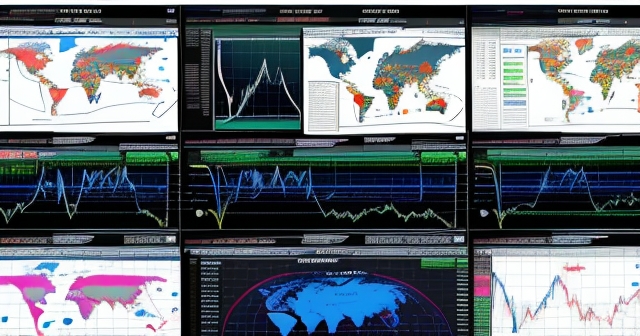
FX Risk Reversal: Understanding Market Sentiment Shifts and Trading Strategies
Table of Contents
ToggleNavigating the Nuances of FX Risk Reversals: Decoding Market Sentiment and Volatility
The foreign exchange market is a dynamic realm, constantly influenced by a complex interplay of economic data, central bank pronouncements, and geopolitical shifts. While many traders focus solely on spot price movements, sophisticated market participants understand that a deeper layer of insight exists within the derivatives market – specifically, in the pricing of FX options. These tools offer a forward-looking perspective, acting as a barometer for market sentiment and expected volatility. Among the most powerful of these indicators are FX risk reversals. Understanding what they are, how they work, and what recent shifts in pairs like EUR/USD and USD/CAD are telling us can equip you with a more comprehensive view of the market landscape.
Here are three key points regarding the importance of FX risk reversals:
- Market Sentiment Indicator: FX risk reversals reflect traders’ expectations and biases regarding future price movements.
- Volatility Measure: They provide insights into implied volatility, which varies depending on market events, indicating how much traders expect prices to swing.
- Hedging Tool: Traders utilize risk reversals to protect against downside risks, making them essential in volatility-based strategies.
What Exactly Are FX Risk Reversals? Peeling Back the Layers
At their core, FX risk reversals represent the difference in implied volatility between out-of-the-money (OTM) call options and out-of-the-money put options with the same expiry date and, crucially, the same delta. Delta, as you may know, measures an option’s sensitivity to changes in the underlying asset’s price. Options with the same delta are considered to have a similar probability of expiring in the money, making them useful for comparing market expectations for upside versus downside movements.
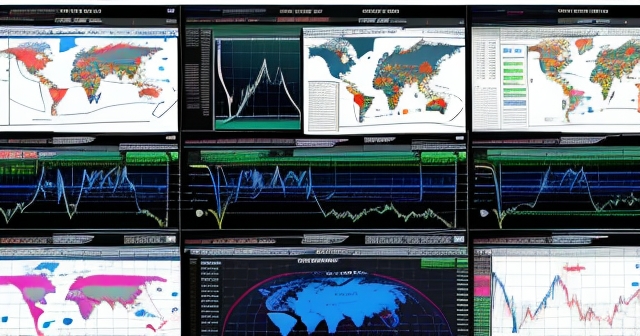
Imagine a specific currency pair, say EUR/USD. You can buy a call option giving you the right (but not the obligation) to buy EUR/USD at a certain price (the strike price) on or before a certain date. This is a bullish bet. Alternatively, you can buy a put option, giving you the right to sell EUR/USD at a certain price – a bearish bet. Options aren’t free; you pay a premium, which is influenced by various factors, including time to expiry, the strike price relative to the current spot price (intrinsic value), and perhaps most importantly for our discussion, implied volatility.
Implied volatility is essentially the market’s expectation of how much the price of the underlying currency pair will move in the future. High implied volatility suggests the market anticipates large price swings, making options more expensive (higher premium). Low implied volatility suggests calmness and lower option premiums.
So, what does the risk reversal measure? It quantifies whether traders are paying a premium for calls (betting on upside) or for puts (betting on downside) at equivalent levels of “out-of-the-moneyness” (represented by delta). A positive risk reversal means that options giving exposure to upside (calls) are more expensive than options giving exposure to downside (puts) for the same delta and expiry. This indicates a bullish bias in market sentiment. Conversely, a negative risk reversal means puts are more expensive, signaling a bearish bias or a higher demand for downside protection.
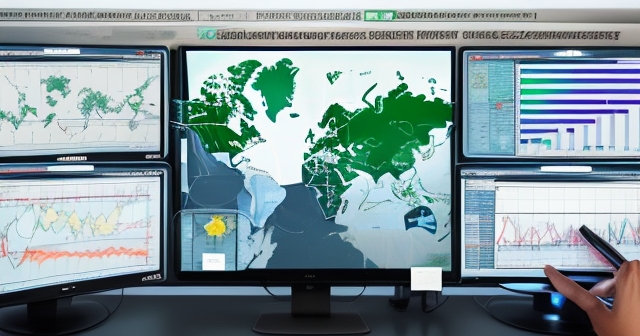
Think of it like this: if the market is broadly bullish on EUR/USD, more traders will want to buy call options to participate in the potential rally. This increased demand for calls drives up their premium relative to puts of equivalent delta. The risk reversal reading will then become positive. If, however, the market grows fearful and anticipates a decline, demand for put options (downside protection) will surge, making puts more expensive relative to calls, resulting in a negative risk reversal.
These readings are typically quoted for various expiries (e.g., one-month, three-month, one-year) and various deltas (e.g., 25-delta). The one-month 25-delta risk reversal is a commonly watched metric as it reflects near-term sentiment and positioning.
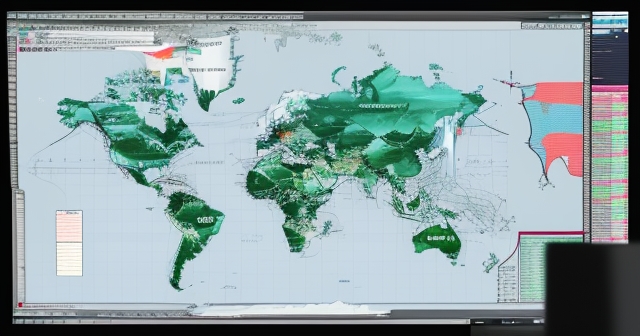
The Engine of Option Pricing: Understanding Implied Volatility
As we just touched upon, implied volatility is a critical component not only of option pricing but also of the risk reversal calculation itself. It’s derived from the market price of options, reflecting the level of uncertainty perceived by traders regarding future price movements. Unlike historical volatility, which measures past price fluctuations, implied volatility is forward-looking.
When significant economic events are looming – perhaps a central bank interest rate decision, a major election, or crucial economic data releases like non-farm payrolls – market participants anticipate potentially large price swings. This increased expectation of volatility leads to a rise in implied volatility across relevant currency pairs. Why? Because the probability of an option ending up “in the money” increases when expected price movements are larger, making both call and put options more valuable.
Consider the period around a highly anticipated Federal Reserve meeting where a significant policy shift (like a rate hike or cut) is expected. Traders know this event could cause substantial moves in USD pairs. This knowledge is priced into options through a spike in implied volatility for expiry dates that encompass the meeting. Option premiums across the board will rise.
However, implied volatility doesn’t always move uniformly across all strike prices. This brings us to the concept of the volatility smile or smirk, which is directly related to risk reversals. Typically, implied volatility isn’t constant for all strike prices for a given expiry. Often, out-of-the-money options (both calls and puts) have higher implied volatility than at-the-money options. When implied volatility is higher for out-of-the-money puts than for out-of-the-money calls of the same delta and expiry, this creates a “skew” towards puts – precisely what a negative risk reversal reflects. This put skew is common in many markets (like equities) as traders often pay a premium for downside protection.
In FX markets, the direction of the skew (positive risk reversal = call skew, negative risk reversal = put skew) provides valuable clues about market expectations. It tells us where the ‘tail risk’ is perceived – are traders more concerned about a sharp move higher (requiring expensive calls) or a sharp move lower (requiring expensive puts)? Changes in this skew, and thus in risk reversals, are often driven by shifts in sentiment regarding specific risks, such as the potential for government intervention, geopolitical events, or the impact of specific macro data.
Decoding Option Skew: Signaling Market Directional Bias
The phenomenon of option skew, as reflected in risk reversals, is a powerful signal of the market’s directional bias and perceived risk distribution. A positive risk reversal, or call skew, means that options giving the right to buy the currency pair at higher prices (OTM calls) are relatively more expensive than options giving the right to sell at lower prices (OTM puts) for the same delta and expiry. This occurs when the market is anticipating potential upside breakouts or views downside risks as less probable or less severe in the near term.
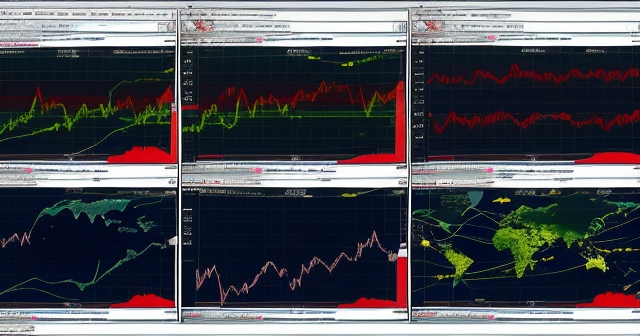
Conversely, a negative risk reversal, or put skew, indicates that OTM put options are more expensive than equivalent OTM calls. This is the market signaling that it perceives greater downside risk or is willing to pay a higher premium for protection against a decline. This can happen during times of heightened uncertainty, fear of a specific negative event (like a trade war escalation), or when a prevailing bullish trend is losing momentum and traders are starting to hedge their long positions.
Think of the options market as a betting arena where participants are placing wagers on future price levels and volatility. The prices they are willing to pay for different options reflect their collective beliefs. When the risk reversal for EUR/USD flips from positive to negative, it doesn’t just mean puts are more expensive; it means the market’s *collective fear or anticipation* of a downside move has increased relative to its anticipation of an equivalent upside move.
This shift in skew is often more telling than a simple change in overall implied volatility. If implied volatility rises across the board but the risk reversal remains positive, it might just mean the market expects larger moves *in general*, but still sees upside as the more likely direction for a sharp move. However, if implied volatility rises *and* the risk reversal flips sharply negative, it strongly suggests that the increased volatility is being driven by specific concerns about downside risks.
Monitoring changes in risk reversal levels over time provides a dynamic view of how market sentiment and perceived risks are evolving. A sustained move in a particular direction for the risk reversal often precedes or accompanies a corresponding move in the spot price, as option positioning reflects the views and hedging activities of large market participants.
If you are looking to translate these insights into actionable trading decisions, having access to a robust trading platform is key. Platforms like Moneta Markets are designed to support traders utilizing complex analysis methods, providing the tools and execution speed needed to react to signals derived from indicators like risk reversals. Offering support for popular interfaces such as MT4, MT5, and Pro Trader, combined with competitive spreads and high execution speeds, can significantly enhance your ability to navigate the markets effectively.
The EUR/USD Shift: Tariffs Tip the Balance Towards Bearish Skew
One of the most significant recent developments highlighted by option markets is the notable shift in the EUR/USD one-month risk reversal. According to the data, this indicator has moved from exhibiting a call option skew (premium for calls) to a put option skew (premium for puts). For instance, a shift from a +0.45% skew towards calls to a -0.14% skew towards puts is a tangible sign of changing sentiment. In practical terms, this means the cost of buying downside protection for EUR/USD via put options has risen relative to the cost of buying upside exposure via call options at the same delta and near-term expiry.
What is driving this change? The analysis points strongly towards increasing market concern over looming trade war risks, particularly the potential for reciprocal tariffs between the United States and Europe. The prospect of the US imposing tariffs on European goods, and the likely response from the EU with retaliatory tariffs, creates significant economic uncertainty. Such tariffs can negatively impact trade flows, corporate earnings (especially for multinational companies), and economic growth prospects in both regions.
For the EUR/USD pair, escalating trade tensions are generally viewed as a bearish factor for the Euro. European economies are heavily reliant on exports, and tariffs could hinder this. Furthermore, trade disputes can dampen overall global risk appetite, often leading to a flight to safety towards currencies like the US Dollar or Japanese Yen. Therefore, the market is pricing in a higher probability of a move lower in EUR/USD due to this specific risk.
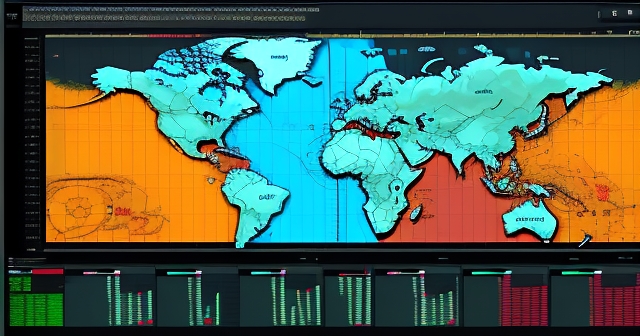
The shift in the risk reversal is a direct reflection of this positioning. Traders and institutions holding long EUR/USD positions, or those concerned about the potential negative economic impact of tariffs, are increasingly buying put options to hedge their exposure or to speculate on a decline. This increased demand for puts drives up their premium, pushing the risk reversal into negative territory. It signals that market participants are losing conviction in the Euro’s ability to appreciate against the Dollar in the near term and are actively preparing for potential downside.
This move in EUR/USD risk reversals is not an isolated event but is happening within a broader context of heightened macro uncertainty. However, the specificity of the shift – aligning precisely with rising rhetoric around trade barriers – underscores the power of risk reversals in pinpointing the market’s primary near-term concerns.
The Tariff Shadow Over EUR/USD: Connecting Cause and Effect
Let’s delve deeper into how the specter of trade tariffs specifically impacts the EUR/USD option market and consequently, the risk reversal. Tariffs aren’t just a minor inconvenience; they can fundamentally alter the economic relationship between countries and continents. For the Eurozone, which boasts significant export industries (automotive, luxury goods, agriculture), the threat of US tariffs is a direct challenge to its economic health. Conversely, the US could face retaliatory tariffs impacting its own export sectors.
When trade tensions escalate, several mechanisms come into play that influence the EUR/USD pair and its options:
| Mechanism | Description |
|---|---|
| Economic Growth Concerns: | Tariffs can slow global trade and economic activity, leading to reduced corporate investment and consumer spending, potentially impacting GDP growth in both the Eurozone and the US. Lower growth prospects for the Eurozone tend to be bearish for the Euro. |
| Supply Chain Disruptions: | Tariffs force companies to reconsider supply chains, leading to uncertainty and potentially increased costs, which can weigh on business sentiment and investment. |
| Central Bank Response: | Faced with slowing growth or increased inflation (due to higher import costs), central banks may alter their monetary policy plans, leading to potential bearish divergence for EUR/USD. |
| Risk Aversion: | During periods of heightened tension, investors often reduce exposure to riskier assets and move into perceived safe havens like the US Dollar, affecting currency valuations negatively. |
All these factors contribute to a market environment where the probability of a significant downside move in EUR/USD increases. Traders who analyze these potential impacts translate their concerns into action within the options market. They anticipate that if tariffs are imposed or tensions worsen, the spot price of EUR/USD is likely to fall. To profit from this potential decline or to protect existing Euro assets, they buy EUR/USD put options.
This concentrated buying pressure on puts, particularly out-of-the-money puts which offer leveraged exposure to a sharp decline, directly pushes up their premiums. When compared to equivalent call options (which are less in demand because the perceived upside potential is diminished by the same tariff threats), the price difference widens, resulting in a negative risk reversal. The data point showing the shift from a call skew (+0.45%) to a put skew (-0.14%) is concrete evidence of this process unfolding in real-time option pricing.
This isn’t just theoretical; it’s a tangible reflection of how the market *prices in* specific, identifiable risks. By monitoring this indicator, we gain insight into how significant global events, like trade disputes, are immediately impacting the positioning and expectations of major players in the currency market.
USD/CAD’s Elevated Risk Reversals: A Trade War Barometer
The impact of trade tensions isn’t confined to the transatlantic relationship. The provided data also highlights significant activity in USD/CAD option risk reversals, noting they are trading at elevated levels. This means there is a substantial premium for CAD puts over CAD calls (which is equivalent to a premium for USD calls over USD puts, signaling expected USD/CAD upside). High USD/CAD risk reversal levels, particularly showing a strong put skew for the Canadian Dollar (meaning traders are paying up for the right to sell CAD), indicate a market expectation for USD/CAD to move higher.
What’s fueling this expectation? Again, trade threats play a pivotal role. The data specifically links the elevated USD/CAD risk reversals and increased implied volatility to renewed US threats of tariffs against Canada. Canada, like the Eurozone, is a major trading partner of the United States, and its economy is highly sensitive to US trade policy.
When the US signals potential tariffs on Canadian goods (or vice versa), it creates similar economic headwinds to those discussed for EUR/USD: potential disruptions to trade, negative impacts on key Canadian export sectors (like lumber, dairy, or potentially others), and overall economic uncertainty. These factors are generally bearish for the Canadian Dollar (CAD) relative to the US Dollar (USD).
The options market reflects this by increasing the demand for CAD puts (betting on CAD weakness) or, equivalently, USD calls (betting on USD strength against CAD). This concentrated demand for downside protection for CAD drives up the premium for CAD puts, resulting in an elevated and negative risk reversal for USD/CAD (measured as CAD vs USD). The data points indicating these risk reversals are at their highest levels since specific past periods (like November 2022, as mentioned in the underlying data) underscore the current severity of this bearish CAD sentiment within the options market, directly tied to trade concerns.
Furthermore, trade threats increase expected volatility for the pair. The uncertainty surrounding if, when, and what tariffs might be implemented creates a wider range of potential outcomes for the USD/CAD exchange rate. This higher expected volatility is priced into option premiums across the board, but the specific skew towards CAD puts tells us that the market believes the *risk* of a significant upward move in USD/CAD (driven by CAD weakness) is higher than the risk of an equivalent downward move.
In essence, the elevated USD/CAD risk reversal serves as a clear warning sign from the options market: traders are actively positioning for potential CAD weakness and increased volatility, primarily driven by the ongoing saga of US-Canada trade relations and the looming threat of tariffs. It tells us that while other factors influence USD/CAD, trade policy is currently a dominant concern being priced into future expectations.
Beyond Tariffs: Other Macro Drivers of FX Volatility
While trade tensions are currently a major focus for FX options markets, particularly for pairs like EUR/USD and USD/CAD, they are not the only drivers of implied volatility and shifts in risk reversals. Currency markets are influenced by a multitude of macroeconomic factors, central bank policies, and political developments. Understanding how these elements also contribute to option pricing provides a more complete picture.
Consider economic data releases. Reports like US Consumer Confidence, Retail Sales, or GDP growth figures provide crucial insights into the health and momentum of an economy. Strong data might lead to expectations of tighter monetary policy (higher interest rates), which is generally supportive of a currency. Weak data might signal the opposite. Option traders anticipate that unexpectedly strong or weak data can cause significant price movements. Therefore, implied volatility for a currency tends to rise leading up to major data releases for that currency’s economy. If the market is particularly sensitive to the potential downside surprise from a data point (e.g., fearing a sharp drop in retail sales), you might see increased demand for puts and a corresponding shift in the risk reversal.
Central bank policy is another paramount driver. The stance and forward guidance from institutions like the Federal Reserve, European Central Bank, Bank of Japan, or Bank of Canada heavily influence interest rate expectations. Changes in these expectations directly impact currency valuations. When a central bank becomes more hawkish (signaling potential rate hikes) or dovish (signaling potential cuts or quantitative easing), implied volatility for that currency often reacts. Furthermore, the *uncertainty* surrounding the timing and magnitude of policy changes can fuel volatility. The market’s perception of which direction is riskier – a faster-than-expected hike or a slower-than-expected hike, for example – can be reflected in the risk reversal skew.
Political developments also inject uncertainty. Potential government shutdowns (as seen in the US), elections, referendums, or significant policy debates (like the German debt-brake reform mentioned in the data) can create unpredictable market reactions. Such events increase the probability of discontinuous price moves (jumps or gaps), which option traders price in through higher implied volatility. The *nature* of the political risk can also influence the risk reversal; for example, a political crisis that might particularly undermine confidence in a country’s fiscal stability could lead to increased demand for puts on its currency.
Even seemingly niche events, like Japanese wage negotiations (Rengo talks), can impact market expectations regarding central bank policy (BoJ in this case) and thus influence implied volatility and option positioning for the Yen. The collective weight of these diverse factors constantly shapes the landscape of perceived risk and potential price movements, all of which gets distilled into the pricing of FX options and, specifically, the levels and shifts in risk reversals.
How to Use Risk Reversals in Your Trading Strategy
For you, as a trader or investor, understanding FX risk reversals isn’t just an academic exercise; it’s a tool that can enhance your market analysis and trading decisions. How can you practically incorporate this indicator into your approach?
- Gauging Market Sentiment: The most direct application is using risk reversals as a barometer for market sentiment. Is the market collectively leaning bullish (positive risk reversal/call skew) or bearish (negative risk reversal/put skew) on a specific currency pair? A sustained trend in the risk reversal often precedes or confirms a trend in the spot market.
- Identifying Potential Reversals: Sharp shifts in risk reversals can signal potential turning points. If a currency pair has been trending higher, but its risk reversal suddenly flips negative and begins to decline sharply, it might indicate that the underlying bullish sentiment is waning, and savvy traders are beginning to hedge or position for a decline. The recent EUR/USD shift from a bullish call skew to a bearish put skew, discussed earlier, serves as a prime example.
- Confirming Spot Price Moves: Risk reversals can be used to confirm the conviction behind spot price movements. If a currency pair is rallying, and the risk reversal is also moving positively (increasing call premium), it suggests the rally is supported by genuine bullish sentiment and positioning in the options market. If the pair is rallying, but the risk reversal is stable or even declining, it might signal that the rally lacks conviction from a risk-taking perspective, possibly being driven by short covering rather than new bullish bets.
- Understanding Hedging Demand: A significant premium for puts (negative risk reversal) signals strong demand for downside protection. This could come from corporations hedging foreign exchange exposure, portfolio managers protecting international investments, or hedge funds speculating on a decline. High demand for puts at out-of-the-money strikes indicates concern about larger, less probable downside moves, revealing where the market perceives the most significant tail risk.
- Contextualizing Implied Volatility: Risk reversals help you understand *why* implied volatility might be high or low. High implied volatility with a strong put skew means the market is primarily anticipating volatile moves *to the downside*. High implied volatility with a strong call skew suggests anticipated volatility is weighted towards the upside. If implied volatility is low and risk reversals are neutral, it suggests a period of expected calm with no strong directional conviction priced into options.

Using risk reversals in conjunction with other forms of analysis – such as technical analysis (chart patterns, indicators), fundamental analysis (economic data, central bank policy), and market structure analysis – can provide a more robust framework for decision-making. They offer a unique window into the positioning and expectations of the large players who actively use options for hedging and speculation.
If you are looking to apply these kinds of advanced market insights to your trading, you need a platform that offers reliability and performance. Moneta Markets is an Australian-based platform that caters to traders of all levels, offering access to over 1000 financial instruments including a wide range of FX pairs. With support for leading platforms like MT4, MT5, and Pro Trader, they provide the technical edge needed to execute strategies based on sophisticated analysis, ensuring you can act quickly and efficiently on the signals you identify.
Risk Reversals vs. Spot: A Comprehensive Market View
It’s crucial to understand that FX risk reversals do not predict spot price movements with certainty. They are indicators of market sentiment, positioning, and perceived risk, derived from the pricing of options. The spot market moves based on actual buy and sell orders driven by economic realities, news events, and supply/demand dynamics. However, the options market is where large players often place forward-looking bets and hedge their exposures, and their collective actions there can certainly influence spot market activity, especially around expiry dates or trigger points.
Think of the spot price as the current state of the market, while risk reversals offer insight into the market’s *expectations* and *concerns* about the future. A comprehensive market view requires looking at both. For example, if the EUR/USD spot price is falling, but the risk reversal remains positive or only slightly negative, it might suggest that the spot decline is more about short-term flows or profit-taking, and the market isn’t yet convinced of a sustained bearish trend from a probabilistic options perspective. Conversely, if the spot price is stable, but the risk reversal is becoming sharply negative, it’s a warning sign that underlying sentiment is deteriorating, and a spot move lower might be imminent as option positions are adjusted or exercised.
The relationship isn’t always one-to-one, and sometimes risk reversals can diverge from spot price action in the short term. These divergences can sometimes offer potential trading opportunities, signaling that the options market is anticipating a different outcome than the recent spot price movement suggests. However, interpreting such divergences requires careful consideration and integration with other analytical tools.
Furthermore, changes in implied volatility itself can impact the sensitivity of the risk reversal. When implied volatility spikes significantly, it can sometimes temporarily distort the risk reversal reading. Therefore, it’s important to look at the risk reversal in the context of the overall volatility environment for the currency pair.
The value of risk reversals lies in providing context and confirmation. They tell you where the collective “smart money” (those sophisticated enough to trade and hedge with options) is placing its bets on future volatility and direction. They offer a probabilistic outlook derived from actual market transactions, rather than just a guess based on news headlines. Integrating this probabilistic, forward-looking view with your analysis of current spot trends and economic fundamentals allows for a more nuanced and potentially more profitable trading approach.
The Limitations and Nuances of Risk Reversal Analysis
While powerful, risk reversal analysis is not without its limitations and requires careful interpretation. No single indicator provides a crystal ball into future market movements, and risk reversals are no exception.
- Correlation vs. Causation: A shift in risk reversal doesn’t always *cause* the spot market to move. Often, both are reacting to the same underlying factors or news. The risk reversal reflects positioning based on expectations, and those expectations may or may not materialize.
- Market Microstructure: Option prices, and thus risk reversals, can sometimes be influenced by factors other than pure directional sentiment, such as specific large hedging flows, arbitrage opportunities, or even technical glitches. While generally reflecting sentiment, they aren’t immune to short-term distortions.
- Expiry Sensitivity: Risk reversals are specific to a particular expiry date. The sentiment reflected in a one-month risk reversal might be very different from that reflected in a one-year risk reversal. Shorter expiries tend to be more sensitive to near-term event risk (like the immediate threat of tariffs or a central bank meeting), while longer expiries might reflect broader macroeconomic or structural views. Always be mindful of the expiry tenor you are observing.
- Delta Selection: Risk reversals are typically quoted for specific deltas (e.g., 25-delta). The skew profile can vary significantly across different deltas. Observing the “volatility smile” across a range of strikes/deltas provides an even more detailed picture of perceived risk distribution than just a single risk reversal point. However, the 25-delta risk reversal is a commonly accepted standard for a broad directional sentiment gauge.
- Context is Key: The significance of a particular risk reversal level or shift must be interpreted within its historical context and against the backdrop of current market news and events. Is the current negative EUR/USD risk reversal historically low? Is the speed of the shift unusual? Comparing current levels to past readings provides valuable perspective.
Furthermore, risk reversals are best used as a supplementary tool. They offer valuable insights into market positioning and expected volatility, but they should be combined with other forms of fundamental and technical analysis to build a robust trading strategy. Relying solely on risk reversals without considering broader economic factors, technical levels, or news flow would be ill-advised.
As you integrate complex tools like risk reversals into your trading, having the right infrastructure is paramount. Platforms regulated by reputable bodies like the FSCA, ASIC, and FSA offer peace of mind regarding fund security through trust accounts and provide the global reach needed to trade a wide array of instruments. Moneta Markets, with its multi-jurisdictional regulation, extensive instrument offering (over 1000+), and features like free VPS and 24/7 multilingual support, provides the comprehensive environment serious traders need to execute their strategies effectively and confidently.
Conclusion: Navigating FX Markets with Advanced Tools
In the intricate world of foreign exchange, gaining an edge requires looking beyond simple price charts. FX risk reversals offer a sophisticated window into the collective sentiment, positioning, and expected volatility of market participants, derived directly from the pricing dynamics of currency options. As we’ve explored, recent shifts in risk reversals for major pairs like EUR/USD and USD/CAD serve as powerful signals, indicating a tangible move away from previous sentiment towards caution and a heightened demand for downside protection.
These shifts are not occurring in a vacuum. They are intricately linked to major macroeconomic and geopolitical catalysts, most notably the escalating concerns surrounding potential trade wars and reciprocal tariffs between major economies. The options market is actively pricing in the potential negative impacts of these events on currency valuations, leading to significant premiums for puts on currencies deemed vulnerable, like the Euro and the Canadian Dollar in the face of US tariff threats.
By understanding the mechanics of risk reversals – how they reflect the premium or discount between call and put options at equivalent deltas and expiries – and by recognizing their relationship with implied volatility and market skew, you can gain a deeper appreciation for the forces shaping currency prices. Monitoring their movements provides forward-looking insights that can complement your fundamental and technical analysis, helping you to identify potential shifts in market conviction and areas where significant hedging or speculative positioning is occurring.
While risk reversals are a valuable tool, remember to use them as part of a comprehensive analytical framework. Combine their signals with economic data analysis, central bank commentary, technical indicators, and an awareness of broader market themes. Doing so will empower you to build a more robust and informed approach to navigating the complexities of the FX market, ultimately helping you make more strategic trading decisions in pursuit of your financial goals.
fx risk reversalFAQ
Q:What are FX risk reversals?
A:FX risk reversals are the difference in implied volatility between out-of-the-money call and put options, indicating market sentiment and bias towards potential price movements.
Q:How do traders use FX risk reversals?
A:Traders use FX risk reversals to gauge market sentiment, confirm price movements, identify potential market reversals, and assess the demand for risk hedging.
Q:What does a positive risk reversal indicate?
A:A positive risk reversal indicates that options for upside (calls) are more expensive than options for downside (puts), suggesting a bullish market sentiment.
You may also like
Calendar
| 一 | 二 | 三 | 四 | 五 | 六 | 日 |
|---|---|---|---|---|---|---|
| 1 | 2 | 3 | 4 | 5 | 6 | 7 |
| 8 | 9 | 10 | 11 | 12 | 13 | 14 |
| 15 | 16 | 17 | 18 | 19 | 20 | 21 |
| 22 | 23 | 24 | 25 | 26 | 27 | 28 |
| 29 | 30 | 31 | ||||
發佈留言
很抱歉,必須登入網站才能發佈留言。